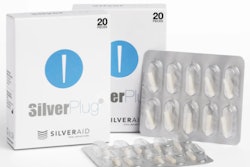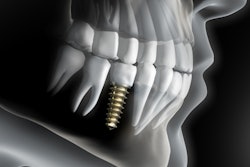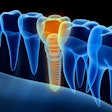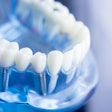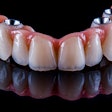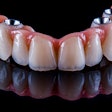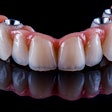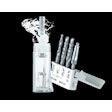More than half of patients who received dental implants may develop peri-implant diseases (PIDs) within a decade of their procedure, according to a review and meta-analysis recently published in the Journal of Periodontology.
However, certain health and lifestyle factors may raise the risk of these conditions, the authors wrote.
“More than half of the adult patients treated with titanium dental implants were affected by PIDs over a 10-year follow-up period,” wrote the authors, led by Maria Elisa Galarraga-Vinueza of the Harvard School of Dental Medicine (J Periodontol, June 9, 2025).
For the review, researchers conducted an electronic search of studies published between September 1 and October 20, 2023, resulting in 102 studies. Eligible studies included adult patients with titanium dental implant-supported prostheses that had been functional for at least one year, they wrote.
The primary goal was to evaluate how common PIDs are, while the secondary aim was to identify systemic, behavioral, and patient-related risk factors linked to these conditions. Risk indicators were identified through observational studies, whereas risk factors were determined from longitudinal studies.
At the patient level, the prevalence of peri-implant mucositis was 46% (95% confidence interval [CI], 41% to 51%), while peri-implantitis affected 21% (95% CI, 17% to 24%). Within a 10-year period, the incidence of peri-implant mucositis was 61% (95% CI, 56% to 65%), while peri-implantitis occurred in 14% of cases (95% CI, 9% to 20%). Weighted mean incidence rates over 20 years were 53% for mucositis and 22% for peri-implantitis, they wrote.
Periodontitis and smoking emerged as key risk indicators for PIDs. Obesity was linked to a higher risk of mucositis, while diabetes and alcohol consumption were associated with peri-implantitis. Additionally, longitudinal studies suggest periodontitis may be a risk factor for PIDs, though evidence linking hypertension and cardiovascular conditions to PIDs was weak.
However, the study had limitations, including the absence of defined cutoff values for maximum implant length and thresholds for implant diameter, the authors noted.
“The current strategies to mitigate PIDs occurrence and progression should center on interventions that can target modifiable systemic risk factors and improve risk profiles for PIDs,” they wrote.







